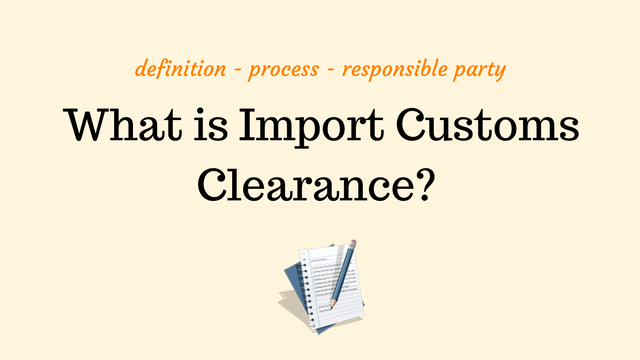But this widespread belief does not reflect the reality, because at least two different customs clearance have to be done in a single foreign trade transaction.
First customs clearance takes place at the exporting stage, which is called export customs clearance and second customs clearance takes place during the importing stage, which is also known as import customs clearance.
On my previous article, I have explained export customs clearance.
Today I want to make clarifications regarding import customs clearance operations.
Understanding Import Customs Clearance Basics?
Import customs clearance processes change by two main variables : product type and origin of the goods.
Understanding The Relationship Between Import Customs Clearance and Product Types / Origin of Goods
The name of the customs enumeration system in question is The Harmonized Commodity Description and Coding System, which is also known as the Harmonized System (HS).
Governments around the world are enumerating all the products subject to international trade according to the Harmonized System with small differences.
For example,
- Germany's HS Code for durum wheat flour is 1101.00.11.00
- USA's HS Code for durum wheat flour is 1101.00.0020
As you can see from above example, HS Code assigned for durum wheat flour of Germany and USA is slightly different.
While the first 6 digits of the durum wheat flour' HS Codes are the same for Germany and USA, the codes are starting to differentiate after the 6th digit.
Important Note: Importers should always keep in mind that HS Code informed them by their suppliers may not be fully usable during the import stage. Importers are responsible to complete the import customs clearance operations in accordance with the importing countries customs rules.
Example: Let us assume that we are importing durum wheat flour in to Germany from Republic of Moldova.
First of all we must obtain the HS Code of the durum wheat flour from Germany's customs system, which is 1101.00.11.00 as I have mentioned above already.
Secondly, we have to figure out the tariff rate and import requirements of durum wheat flour in regards to German customs. In order to do that we can use Export Helpdesk, a beautiful and very useful website for exporters who would like to export their goods in to European Union.
From above image, which is an actual screenshot from Export Helpdesk website, you can see that there is no excise tax applied to Moldova origin durum wheat flour in Germany. VAT value is 7%.
On below picture, you can see not only Germany's tariff rates applied to Moldova origin durum wheat flour but also Germany's applied tariff rates for 3rd country origin durum wheat flour.
Importers pay no customs tariff when importing durum wheat flour from Moldova. But, it would be another story if importers tried to import durum wheat flour from another country such as China, in which case they would have to paid 172 EUR/ per metric tonnes as customs tariff.
Understanding Import Customs Clearance Process
- Step 1 - Learn the HS Code: HS Code of the goods should be determined before shipment is effected. (Please contact your customs broker to learn the HS Code)
- Step 2: Make the Cost Analysis: Importers should know all their costs to bring the goods up to their warehouses, before initiating the import operations. While some costs can be easily identified such as the cost of goods, international transport cost, insurance, etc., others require some efforts to uncover such as customs duties, other taxes collected during the import customs procedures, anti-dumping duties etc. With the help of the HS Code, you should be able to understand all of your costs.
- Step 3: Make Sure That There Is No Legal Obstacle Exists : With the help of the HC Code, you can figure out all import requirements. Again, you need to work with an experienced customs broker. Make sure that importing is doable from a legal point of view.
- Step 4 : Sign Sales Contract, Choose Best Incoterms and Arrange the Shipment : Signing a well-established sales contract will protect you against unwanted situations, correct Incoterms choice will save you from unexpected costs. Arrange the shipment and follow the transport status until the goods arrive to the destination point.
- Step 5 : Get the Documents, Initiate Import Customs Clearance Process: Importers rely on the documents that has been prepared or acquired by the exporter. These documents can be classified as commercial documents, transport documents, insurance documents, financial documents, legal documents etc. Payment method will determine how importers receive the documents from the exporter. Under cash against documents and letters of credit payment methods, importers have to receive the documents from their banks. Under cash in advance and open account terms, documents will be received from the exporters direct.
- Step 6 : Clear the Goods from Customs, Check Quality and Quantity, Give Feedback to The Exporter: After clearing the goods from customs, importers should check the quality and quantity of the consignment as soon as possible in order to avoid any loss of rights in the event of a possible conflict in quality and quantity.
Who Should Make Import Customs Clearance?
According to Incoterms 2010 rules, the buyer must obtain, at its own risk and expense, any import licence or other official authorization and carry out all customs formalities for the import of the goods except DDP incoterms.


